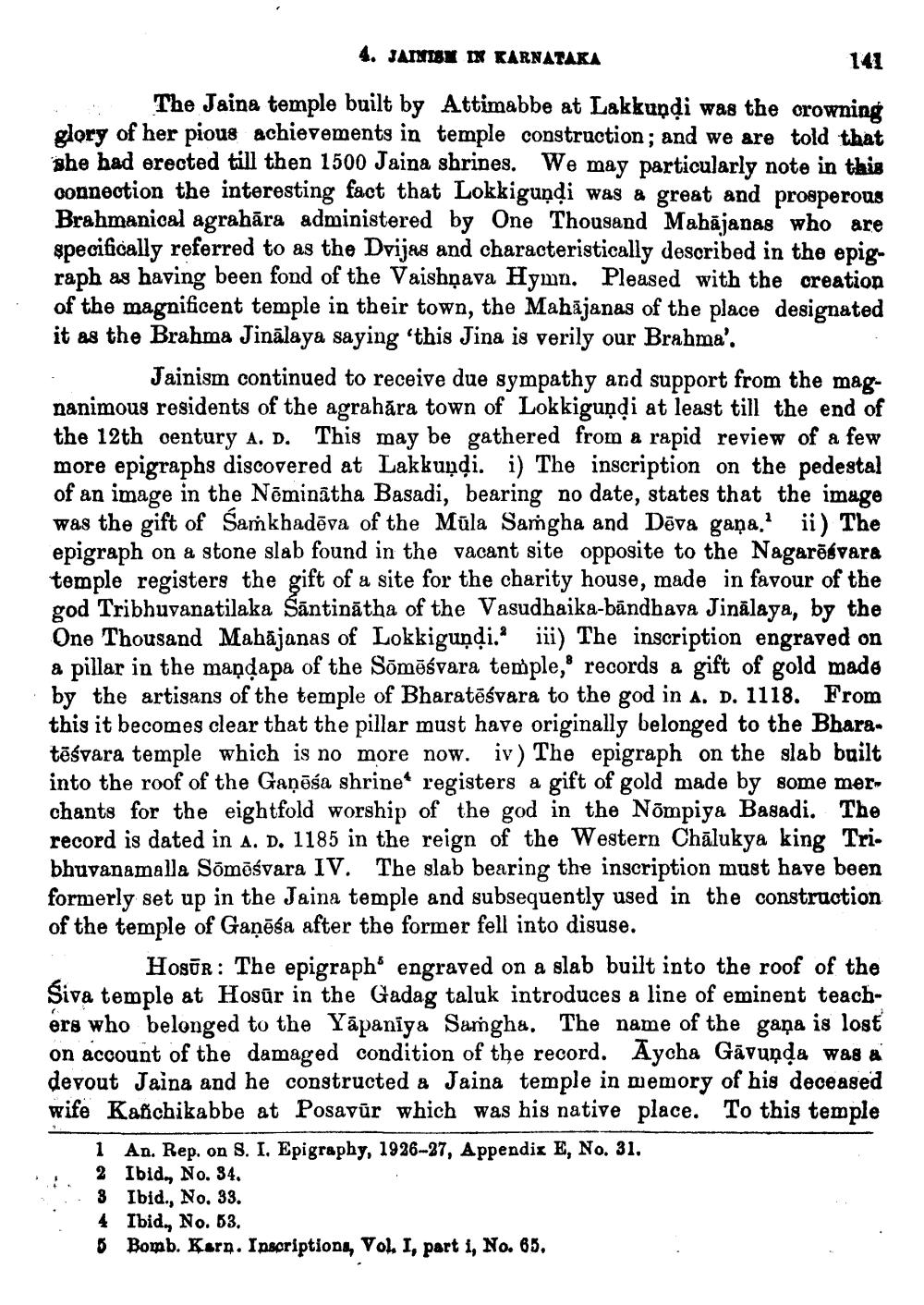________________
4. JAINISM IN KARNATAKA
The Jaina temple built by Attimabbe at Lakkundi was the crowning glory of her pious achievements in temple construction; and we are told that she had erected till then 1500 Jaina shrines. We may particularly note in this connection the interesting fact that Lokkigundi was a great and prosperous Brahmanical agrahāra administered by One Thousand Mahajanas who are specifically referred to as the Dvijas and characteristically described in the epigraph as having been fond of the Vaishnava Hymn. Pleased with the creation of the magnificent temple in their town, the Mahajanas of the place designated it as the Brahma Jinalaya saying 'this Jina is verily our Brahma'.
141
Jainism continued to receive due sympathy and support from the magnanimous residents of the agrahara town of Lokkigundi at least till the end of the 12th century A. D. This may be gathered from a rapid review of a few more epigraphs discovered at Lakkundi. i) The inscription on the pedestal of an image in the Neminatha Basadi, bearing no date, states that the image was the gift of Samkhadēva of the Mūla Samgha and Dēva gaņa. ii) The epigraph on a stone slab found in the vacant site opposite to the Nagarēsvara temple registers the gift of a site for the charity house, made in favour of the god Tribhuvanatilaka Santinatha of the Vasudhaika-bāndhava Jinālaya, by the One Thousand Mahajanas of Lokkigunḍi. iii) The inscription engraved on a pillar in the maṇḍapa of the Sōmesvara temple, records a gift of gold made by the artisans of the temple of Bharatesvara to the god in A. D. 1118. From this it becomes clear that the pillar must have originally belonged to the Bharatesvara temple which is no more now. iv) The epigraph on the slab built into the roof of the Gaṇeśa shrine registers a gift of gold made by some merchants for the eightfold worship of the god in the Nōmpiya Basadi. The record is dated in A. D. 1185 in the reign of the Western Chalukya king Tribhuvanamalla Sōmēsvara IV. The slab bearing the inscription must have been formerly set up in the Jaina temple and subsequently used in the construction of the temple of Ganesa after the former fell into disuse.
(.
HOSUR The epigraph engraved on a slab built into the roof of the Siva temple at Hosur in the Gadag taluk introduces a line of eminent teachers who belonged to the Yapaniya Samgha. The name of the gana is lost on account of the damaged condition of the record. Aycha Gavunḍa was a devout Jaina and he constructed a Jaina temple in memory of his deceased wife Kanchikabbe at Posavur which was his native place. To this temple
1
An. Rep. on S. I. Epigraphy, 1926-27, Appendix E, No. 31.
2 Ibid., No. 34.
3 Ibid., No. 33.
4 Ibid., No. 53.
5 Bomb. Karn. Inscriptions, Vol. I, part i, No. 65.




